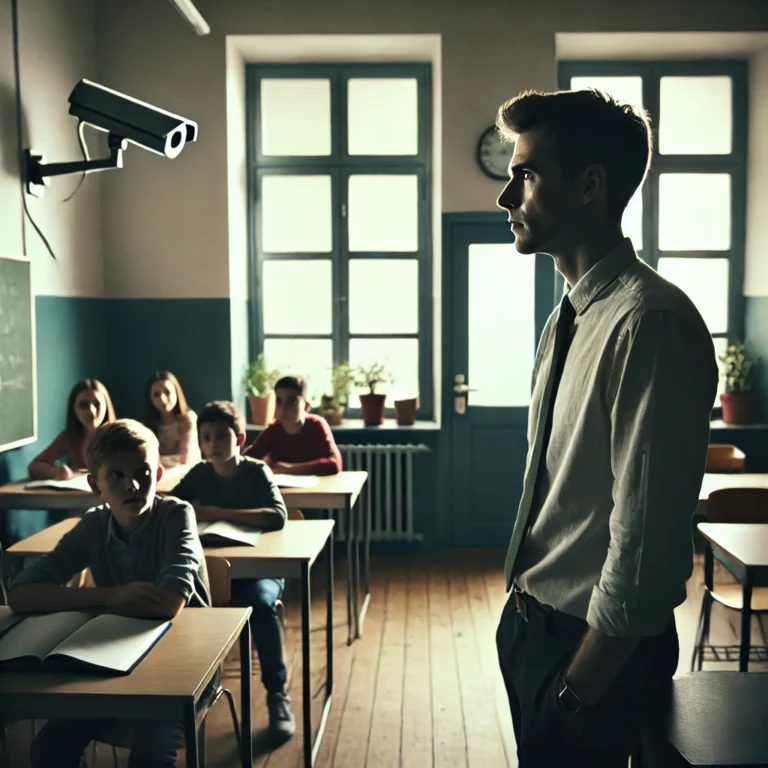In the United States, a growing number of teachers are reporting that they feel unsafe in their classrooms. Incidents of violence, threats, and general security concerns have become more frequent, leaving educators not only responsible for their students’ education but also for their own safety. This increasing pressure is leading to a significant emotional toll on teachers, and it’s a problem that needs urgent attention.
The Rise of Classroom Incidents
Over the past decade, incidents involving threats and violence toward teachers have been on the rise. According to the American Psychological Association (APA), 1 in 3 teachers has experienced at least one instance of verbal or physical aggression from a student. Additionally, reports of students bringing weapons to school, school shootings, and even confrontations between teachers and parents have only heightened these concerns.
While violence in schools can take many forms, some of the most common issues include:
-
Physical aggression: Students lashing out physically at teachers, sometimes even resulting in injury.
-
Verbal threats: Teachers being verbally assaulted or threatened by students, parents, or even colleagues.
-
Classroom disruptions: Aggressive behaviors that lead to chaotic and unsafe environments, making it difficult for teachers to maintain control and provide a safe learning space for other students.
These incidents can occur in any school setting, from elementary to high schools, urban to rural areas, leaving teachers feeling vulnerable regardless of their environment.
The Emotional Toll on Teachers
The emotional and psychological impacts of teaching in a potentially unsafe environment are profound. Teachers are increasingly reporting high levels of stress, anxiety, and even symptoms of PTSD. When faced with violence or the threat of violence, many teachers are forced to constantly be on guard, unable to relax or focus solely on their primary role as educators.
The mental health of teachers is often overlooked in discussions about school safety, but it plays a crucial role in both teacher retention and student success. Teachers who feel unsafe may become less engaged in their work, struggle to form positive relationships with students, or even leave the profession altogether.
What Schools Are Doing
In response to the growing concerns about violence and safety, schools and districts across the U.S. have begun to implement new strategies to protect both students and staff:
-
Increased Security Measures: Many schools have installed metal detectors, surveillance cameras, and implemented stricter security protocols to prevent violent incidents. However, these measures can only go so far in addressing the root causes of the problem.
-
Training and Preparation: Some districts have introduced training programs to help teachers de-escalate potentially violent situations or prepare them for active shooter scenarios. While these efforts are critical, they can also add to the stress and burden teachers are already feeling.
-
Mental Health Support: Recognizing the emotional strain of these issues, some schools are expanding access to counseling services and mental health resources for teachers. However, there is still much work to be done in making these resources accessible to all educators who need them.
What Needs to Change
While schools have made some efforts to address the issue of classroom violence, there are still systemic changes that need to be made to protect teachers:
-
Improved Classroom Management Training: Teachers need more support in managing classroom behavior effectively. Comprehensive training programs that provide teachers with tools to handle disruptive or violent students can help create safer learning environments.
-
Addressing Root Causes: Many violent incidents stem from larger societal issues, such as poverty, trauma, and inequality. Addressing these root causes through community support and early intervention programs can reduce the number of violent encounters in schools.
-
Teacher Voices Matter: Teachers themselves need to be part of the conversation. Their firsthand experiences should guide the development of new policies and programs aimed at improving safety in schools.
The rise of classroom violence and safety concerns in the U.S. has placed teachers in a difficult and sometimes dangerous position. While security measures and training programs are important, it is crucial to address the deeper issues that lead to these incidents. By investing in mental health resources, creating safer classroom environments, and including teachers’ voices in the decision-making process, schools can better protect both educators and students.


